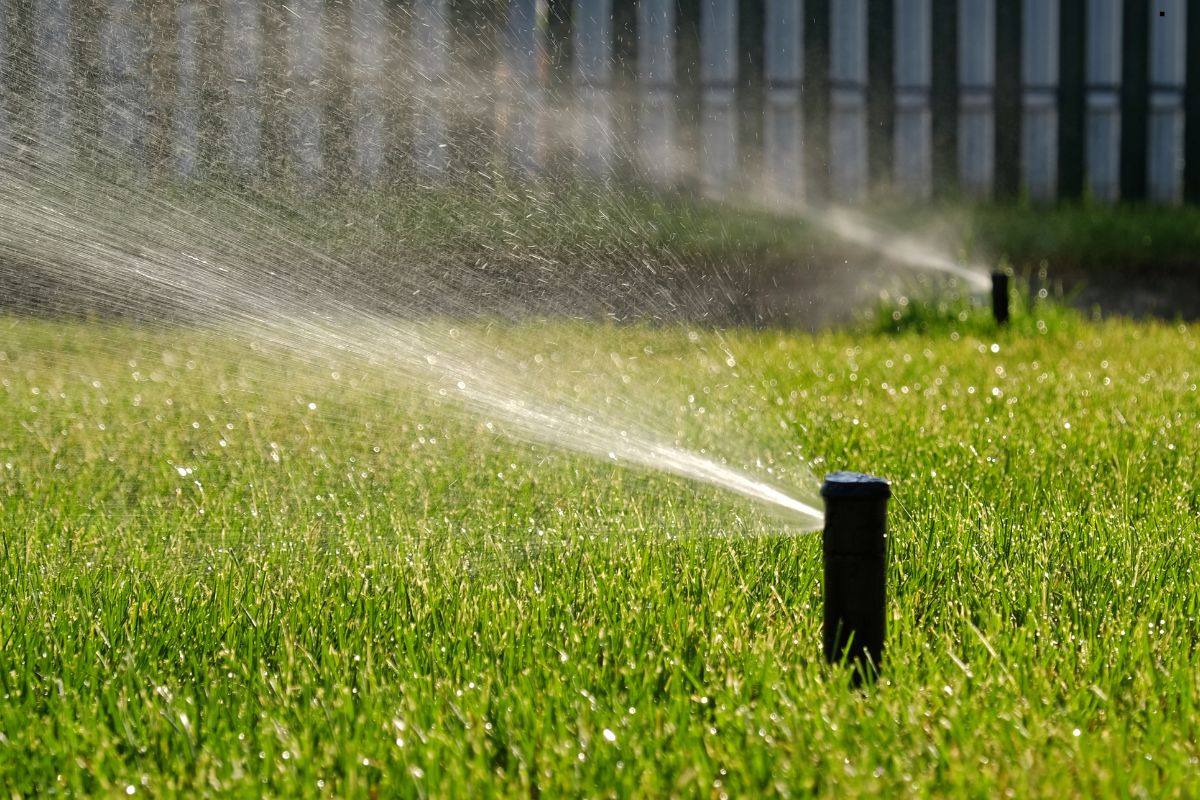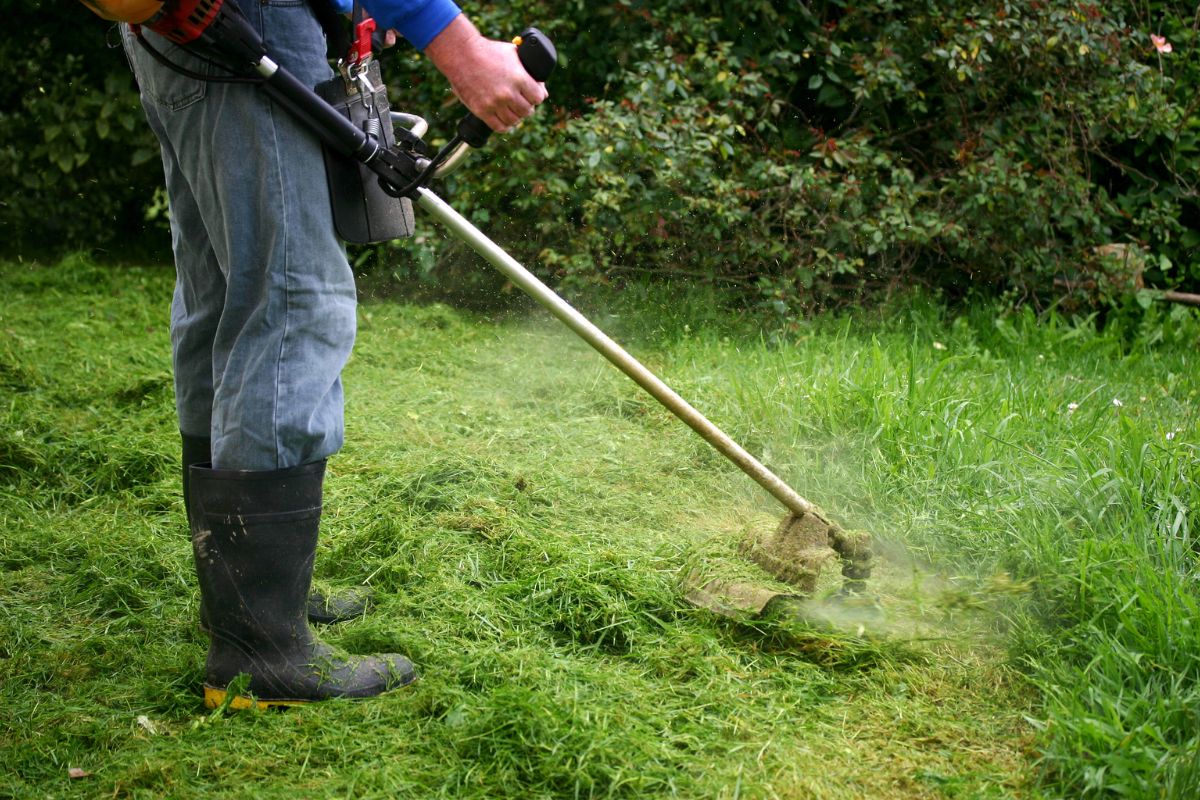
Are you dreaming of a vibrant, weed-free lawn that’s the envy of the neighborhood? Pre-emergent weed control is your secret weapon! This guide will equip you with the knowledge to understand, select, and apply pre-emergent herbicides effectively, preventing weeds before they even sprout.
Why Pre-Emergent Weed Control Matters
Imagine spending countless hours pulling weeds, only to see them return with a vengeance. Pre-emergent herbicides offer a proactive solution. Instead of battling weeds after they emerge, these powerful tools create a barrier that prevents weed seeds from germinating in the first place. By nipping weeds in the bud (literally!), you’ll save time, effort, and achieve a healthier, more beautiful lawn. A well-timed pre-emergent application is a cornerstone of any successful lawn care strategy. Check out our previous blog How Can You Eliminate Weeds Before They Can Even Appear in Rockford? Effective Strategies for a Weed-Free Landscape for more insights.
Understanding Weeds: Know Your Enemy

To effectively combat weeds, you need to know what you’re up against. Weeds are broadly classified into two main categories: annuals and perennials.
Types of Weeds (Annual vs. Perennial)
- Annual weeds complete their life cycle in one year, germinating from seed, growing, flowering, producing seeds, and then dying. Common examples include crabgrass, foxtail, and common chickweed.
- Perennial weeds live for more than two years. They can reproduce by seed, but also through underground roots, rhizomes, or tubers, making them more difficult to control. Dandelions, plantain, and clover are common perennial weeds.
Knowing whether you’re dealing with annual or perennial weeds is crucial because pre-emergent herbicides are generally most effective against annual weeds. For perennial weeds, you may need a combination of pre-emergent and post-emergent treatments.
Common Weeds in the USA
The specific types of weeds you’ll encounter depend on your region, but here are some of the most common culprits:
- Crabgrass: A warm-season annual grass that thrives in sunny areas.
- Dandelions: A perennial broadleaf weed with a distinctive yellow flower and deep taproot.
- Chickweed: A cool-season annual weed that forms dense mats.
- Poe Annual (Annual Bluegrass): A cool-season annual grass that often appears as unsightly clumps in lawns.
- Clover: A perennial broadleaf weed that is easily identified by its three-leaf clusters.
- Plantain: A perennial broadleaf weed that forms a rosette of leaves close to the ground.
Want to get rid of stubborn weeds? Our lawn care experts know exactly how to get the results you want. Call Us Now
What are Pre-Emergent Herbicides?
Pre-emergent herbicides are chemical compounds designed to prevent weed seeds from germinating. They work by creating a chemical barrier in the top layer of the soil, interfering with the weed seedling’s development as it emerges from the seed.
How Pre-Emergent Herbicides Work
These herbicides don’t kill existing weeds; instead, they stop the germination process. When a weed seed sprouts, the herbicide disrupts cell division or root development, preventing the seedling from establishing itself. This is why timing is critical – you need to apply the pre-emergent before the weed seeds germinate.
Granular vs. Liquid Pre-Emergent Herbicides
Pre-emergent herbicides are available in two main formulations: granular and liquid.
- Granular Pre-Emergent: These are typically applied with a spreader. They are easy to apply, provide even coverage (when applied correctly), and are often slow-release, providing longer-lasting control. However, they need to be watered in after application to activate the herbicide.
- Liquid Pre-Emergent: These are applied with a sprayer. They offer precise coverage, can be mixed with other lawn care products, and often provide faster results. However, they require more careful application to avoid over-application or uneven coverage.
Choosing the Right Pre-Emergent for Your Lawn
Selecting the right pre-emergent herbicide is essential for effective weed control and lawn health. Consider these factors:
Identifying Your Grass Type
The type of grass you have significantly impacts which pre-emergent herbicides you can safely use. Some herbicides can damage or kill certain grass types. Common grass types in the U.S. include:
- Kentucky Bluegrass: A cool-season grass common in northern states.
- Fescue: A cool-season grass known for its durability.
- Bermuda: A warm-season grass that thrives in southern climates.
- Zeisian: A warm-season grass that forms a dense, carpet-like turf.
Selecting the Correct Active Ingredient
Pre-emergent herbicides contain different active ingredients that target specific weeds. Common active ingredients include:
- Protamine: Effective against a wide range of annual grasses and broadleaf weeds.
- Dithiopyr: Provides both pre-emergent and early post-emergent control of crabgrass.
- Pendimethalin: Controls many annual grasses and some broadleaf weeds.
Always read the label carefully to determine which weeds the herbicide targets and to ensure it is safe for your lawn.
Considering Your Local Climate and Regulations
Different regions of the U.S. have varying climates and weed pressures. In addition, some states or municipalities may have restrictions on certain herbicides. Check with your local extension office or agricultural department for specific recommendations and regulations in your area. (External link to a State Extension Office)
Don’t get overwhelmed! Our knowledgeable team can help you choose the right pre-emergent for your lawn’s specific needs. Call Us Today for personalized advice!
When to Apply Pre-Emergent Herbicides

Timing is paramount when it comes to pre-emergent herbicide application. Applying too early or too late can significantly reduce its effectiveness.
Timing is Everything!
The goal is to apply the pre-emergent herbicide before weed seeds begin to germinate. This typically occurs when soil temperatures reach a consistent temperature for several consecutive days.
Regional Application Schedules
While precise timing varies by region and weather conditions, here are general guidelines:
- Northern U.S.: Apply in early spring, before soil temperatures consistently reach.
- Southern U.S.: Apply in late winter or early spring. A second application may be needed in late summer for winter annuals.
- Midwest U.S.: Apply in early spring.
- Western U.S.: Timing varies greatly depending on elevation and climate zone.
Disclaimer: Always check local weather patterns, soil temperatures, and university extension resources for the most accurate timing in your area.
How to Apply Pre-Emergent Herbicides
Proper application is crucial for achieving optimal weed control. Follow these steps:
Preparing Your Lawn
Before applying pre-emergent herbicide, prepare your lawn by:
- Mowing: Mow your lawn a few days before application.
- Dethatching: Remove excessive thatch to allow the herbicide to reach the soil.
- Aerating: Aeration can improve herbicide penetration in compacted soils.
Application Techniques
- Granular Pre-Emergent: Use a spreader to apply the granules evenly across your lawn. Calibrate the spreader according to the product label to ensure the correct application rate. Overlap slightly to prevent gaps in coverage.
- Liquid Pre-Emergent: Use a sprayer to apply the liquid herbicide uniformly. Avoid over-application, which can damage your lawn.
Watering After Application
After applying the pre-emergent herbicide, water it in thoroughly. This helps activate the herbicide and move it into the soil where it can create the weed control barrier.
Worried about proper application? Let our professional lawn care team handle it for you! We guarantee even coverage and effective weed control. Check out our Lawn Care Services to learn more about how we can keep your lawn in top shape.
Post-Application Care and Maintenance
After applying pre-emergent herbicide, proper lawn care practices are essential for maintaining a healthy, weed-free lawn.
Monitoring for Weed Breakthrough
Even with proper application, some weeds may still break through the pre-emergent barrier. Monitor your lawn regularly for weed growth and address any breakouts promptly with a post-emergent herbicide.
Lawn Care Practices for Weed Prevention
- Proper Mowing Height: Mowing at the correct height helps your grass shade the soil, preventing weed seeds from germinating.
- Fertilization: A well-fertilized lawn is more competitive against weeds.
- Watering: Water deeply but infrequently to encourage deep root growth, making your lawn more resilient.
Safety Precautions When Using Pre-Emergent
When handling any herbicide, safety should be your top priority.
Protecting Yourself
- Wear appropriate personal protective equipment (PPE), such as gloves, long sleeves, long pants, and eye protection.
- Read and follow the product label carefully.
- Avoid inhaling the herbicide or getting it on your skin.
Protecting Children, Pets, and the Environment
- Keep children and pets away from the treated area until the herbicide has dried and watered in.
- Store herbicides in a safe place, out of reach of children and pets.
- Avoid applying herbicides near waterways or sensitive areas.
Your safety is our top priority. We use environmentally responsible practices and take all necessary precautions to protect your family, pets, and the environment. [Schedule your service today]
Common Pre-Emergent Problems and Solutions
Even with careful planning, problems can sometimes arise. Here are some common issues and their solutions:
Ineffective Weed Control
- Problem: Weeds are still growing despite the pre-emergent application.
- Solution: Check the application rate, timing, and product selection. Consider a second application or a post-emergent herbicide.
Damage to Desirable Plants
- Problem: The herbicide has damaged or killed desirable plants.
- Solution: Carefully read the label to ensure the herbicide is safe for your grass type and avoid over-application.
Conclusion: A Beautiful, Weed-Free Lawn is Within Reach
Pre-emergent weed control is a powerful tool for achieving a lush, weed-free lawn. By understanding the principles outlined in this guide and following the instructions carefully, you can prevent weeds before they start and enjoy a beautiful lawn all season long. Don’t wait – start planning your pre-emergent application today! Call us to get started!
FAQs About Pre-Emergent Weed Control
What is the best pre-emergent herbicide?
The “best” pre-emergent herbicide depends on your grass type, the weeds you’re targeting, and your local climate. Protamine, dithiopyr, and pendimethalin are popular options, but always read the label carefully.
Is pre-emergent safe for pets?
When applied according to the label instructions, most pre-emergent herbicides are safe for pets after they have dried and been watered in. However, it’s always best to keep pets off the treated area for the recommended period.
Can I apply pre-emergent with fertilizer?
Yes, many “weed and feed” products combine a pre-emergent herbicide with fertilizer. This can save you time and effort, but make sure the product is appropriate for your grass type.
How long does pre-emergent last?
Most pre-emergent herbicides provide weed control for approximately 2-4 months, depending on the product and environmental conditions.
Can I apply pre-emergent before rain?
Applying pre-emergent before rain is generally fine, as rain helps water in the herbicide and activate it. However, avoid applying before heavy rain, which could wash away the herbicide. For expert advice on pre-emergent application, contact us today!

